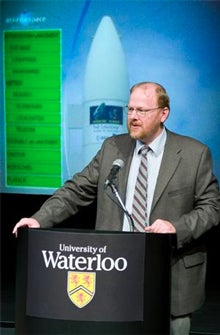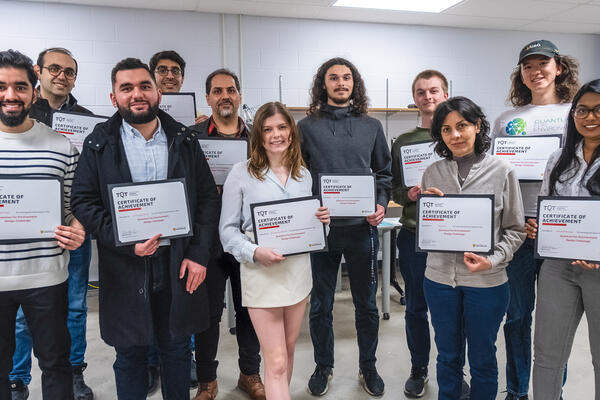
Finding water across the universe
Waterloo physics and astronomy professor Michel Fich is looking for water – not underground, but way, way, up in the sky and across the universe.

Waterloo physics and astronomy professor Michel Fich is looking for water – not underground, but way, way, up in the sky and across the universe.
By Staff Communications & Public Affairs
At a university renowned around the globe for its water research, Michel Fich is boldly going where none of his campus colleagues have gone before: beyond the Earth’s moist atmosphere.
While the physics and astronomy professor will remain firmly planted on Earth, he has sent aloft a complicated instrument — a Terahertz spectrometer — to search for water molecules across the universe.
Part of the European Space Agency’s Herschel Space Observatory, launched in 2009, the Heterodyne Instrument for the Far Infrared (HIFI) allows a team of 30 Canadian astronomers to make detailed studies of water in our galaxy and beyond.
As senior manager in charge of the Canadian hardware contribution, Fich and his team developed a local oscillator source unit, essentially a radio tuner and “the heart of the HIFI,” he says.
With it, the researchers may now have a chance to find answers to some of their most burning questions:
Canadian researchers are guaranteed time to use the HIFI by directing where the instrument is pointed and how data is collected. Yet in addition to the scientific and commercial advantages of Herschel, Fich sees another bonus that is often overlooked.
“When we start doing real rocket science in Canada, in Waterloo, it encourages kids to think about careers in science. That’s a very real benefit to Canada.”

Read more
This question led Michelle Li (BSc ’05) on a journey to advocate for carbon literacy and empower consumers to understand their influence on climate change.

Read more
12 Waterloo students and postdoctoral fellows receive up to $10,000 in funding to develop their green-tech solutions

Read more
World-class researchers shape new ways to foster happiness and personal well-being
The University of Waterloo acknowledges that much of our work takes place on the traditional territory of the Neutral, Anishinaabeg and Haudenosaunee peoples. Our main campus is situated on the Haldimand Tract, the land granted to the Six Nations that includes six miles on each side of the Grand River. Our active work toward reconciliation takes place across our campuses through research, learning, teaching, and community building, and is co-ordinated within the Office of Indigenous Relations.